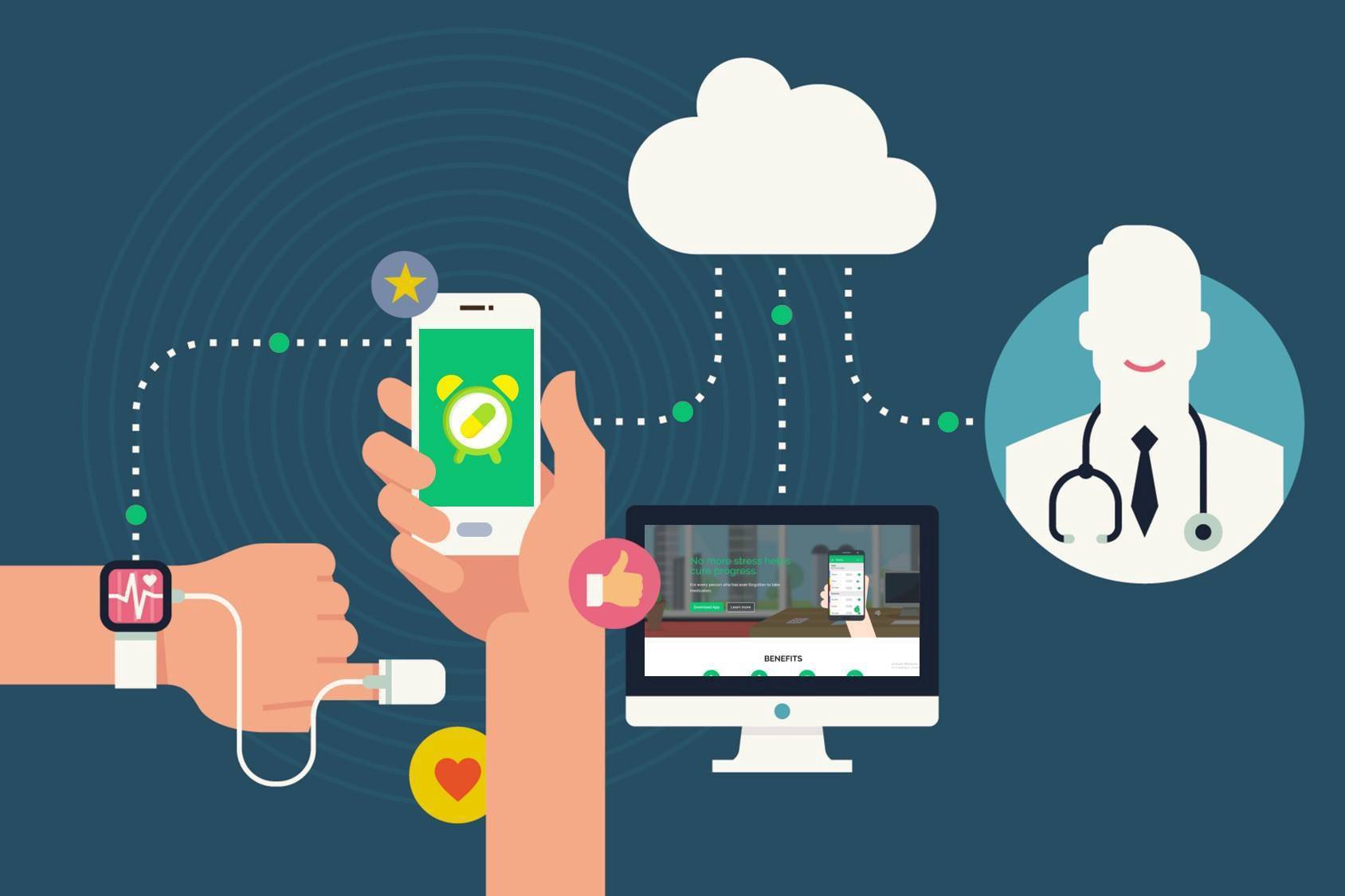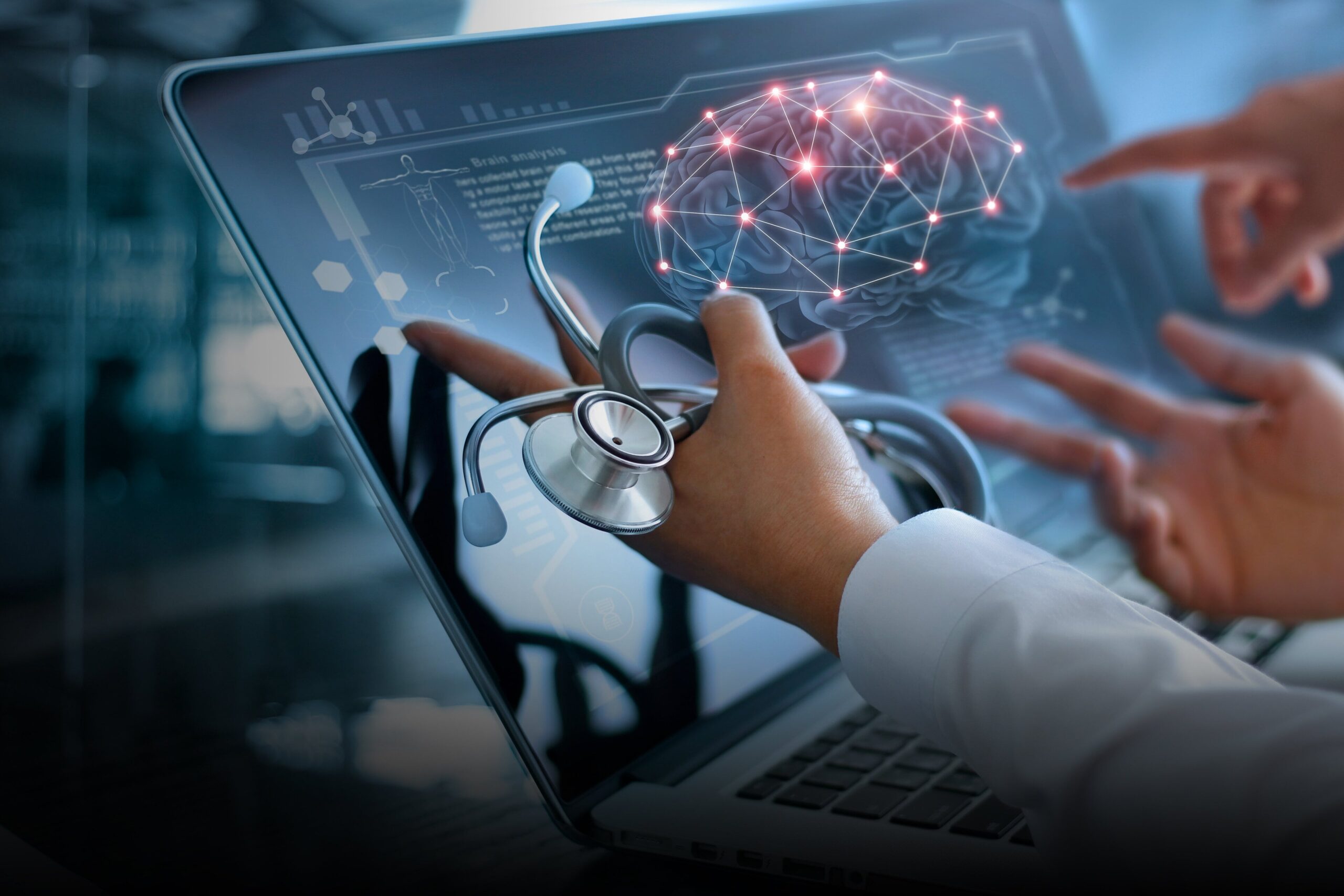The Future of Healthcare: Case Studies in Digital Health sets the stage for a wild ride through the latest tech transforming medicine. We’re diving deep into how telemedicine is changing access to care, especially in rural areas, and how AI is revolutionizing diagnosis and treatment. Get ready to explore the power of big data, the security of blockchain, the potential of wearables, and the mind-bending possibilities of VR and AR in healthcare.
It’s gonna be a fascinating look at how technology is shaping the future of patient care.
Telemedicine and Remote Patient Monitoring

Telemedicine and remote patient monitoring (RPM) are revolutionizing healthcare delivery, particularly impacting access, cost, and the management of chronic conditions. These technologies offer significant potential for improving patient outcomes and streamlining healthcare systems, but also present unique challenges.
Telemedicine’s Impact on Healthcare Access in Rural Areas
The expansion of telemedicine has been a game-changer for individuals in rural and underserved communities, often characterized by limited access to specialists and healthcare facilities. Telemedicine bridges geographical barriers, allowing patients to consult with specialists remotely, eliminating the need for extensive travel and associated costs. This increased accessibility leads to earlier diagnoses, improved treatment adherence, and ultimately, better health outcomes.
Cost-Effectiveness of Telemedicine vs. Traditional In-Person Visits
The cost-effectiveness of telemedicine varies depending on the specific service and patient population. However, generally, telemedicine tends to be more affordable for patients and healthcare providers.
| Feature | Telemedicine | Traditional In-Person Visit |
|---|---|---|
| Travel Costs | Significantly Reduced or Eliminated | Can be substantial, especially for rural patients |
| Time Costs | Reduced time commitment for appointments | Includes travel time, waiting time in office |
| Consultation Fees | Often lower than in-person visits | Typically higher due to overhead costs |
| Overall Cost | Generally lower, especially for routine follow-ups | Higher due to cumulative travel, time, and consultation costs |
Challenges and Opportunities in Remote Patient Monitoring for Chronic Disease Management
Remote patient monitoring (RPM) uses technology to collect and transmit patient health data, such as blood pressure, weight, and glucose levels, from the patient’s home to healthcare providers. This allows for continuous monitoring of chronic conditions like diabetes, heart failure, and hypertension, enabling proactive intervention and preventing hospitalizations. Challenges include patient engagement, ensuring data accuracy, managing technical issues, and addressing data privacy concerns.
Opportunities include improved patient outcomes, reduced hospital readmissions, and more efficient use of healthcare resources.
Addressing Data Security and Privacy Concerns in Telemedicine Platforms
Data security and privacy are paramount in telemedicine. Robust security measures, including encryption, secure data storage, and access controls, are essential to protect patient information. Compliance with regulations such as HIPAA in the United States is mandatory. Transparency with patients regarding data usage and security protocols is crucial to build trust and ensure patient confidentiality.
Successful Telemedicine Case Studies
One successful telemedicine program focuses on providing mental health services to veterans in rural areas. By utilizing video conferencing and secure messaging, veterans can access therapy and counseling from qualified professionals without the need to travel long distances. Another example involves a remote patient monitoring program for patients with congestive heart failure. The program uses wearable sensors to monitor vital signs, allowing for early detection of worsening symptoms and timely interventions, leading to a significant reduction in hospital readmissions.
A third example involves the use of telemedicine to provide specialized pediatric care to children in underserved communities, improving access to specialists and reducing the need for families to travel long distances for consultations.
Artificial Intelligence in Diagnostics and Treatment

Artificial intelligence (AI) is rapidly transforming healthcare, offering the potential to revolutionize diagnostics and treatment. Its ability to analyze vast amounts of data with incredible speed and accuracy surpasses human capabilities in many areas, leading to improved patient outcomes and more efficient healthcare systems. This section explores the burgeoning role of AI in medical diagnosis and treatment, examining both its immense potential and the ethical considerations it raises.AI’s impact on medical diagnostics is significant, primarily due to its capacity to enhance both the accuracy and speed of diagnosis.
This translates to earlier interventions, better treatment planning, and ultimately, improved patient survival rates. The technology is particularly beneficial in areas where human error can have serious consequences, or where the sheer volume of data makes accurate, timely analysis challenging.
AI Applications in Medical Diagnostics
AI algorithms are being applied across various medical specialties to improve diagnostic accuracy. The ability to analyze medical images, patient history, and genetic information allows for a more comprehensive and nuanced understanding of a patient’s condition.
- Cancer Detection: AI algorithms can analyze medical images (X-rays, CT scans, MRIs) to detect cancerous tumors with greater accuracy and at earlier stages than human radiologists alone. For example, AI can identify subtle patterns and anomalies that might be missed by the human eye, improving early detection rates for lung cancer, breast cancer, and other malignancies.
- Disease Prediction: AI can analyze patient data (medical history, lifestyle factors, genetic information) to predict the likelihood of developing specific diseases, such as heart disease or diabetes. This allows for proactive interventions and lifestyle changes to reduce the risk of developing these conditions.
- Drug Discovery and Development: AI accelerates the drug discovery process by analyzing vast datasets of chemical compounds and biological information to identify potential drug candidates. This significantly reduces the time and cost associated with traditional drug development.
- Pathology: AI assists pathologists in analyzing microscopic images of tissue samples to identify cancerous cells or other abnormalities. This improves diagnostic accuracy and consistency, reducing the potential for human error.
- Ophthalmology: AI algorithms can analyze retinal images to detect early signs of diabetic retinopathy, glaucoma, and other eye diseases. Early detection can prevent vision loss or blindness.
Ethical Considerations of AI in Healthcare Decision-Making
The integration of AI into healthcare decision-making raises several ethical concerns that need careful consideration. These include issues of bias in algorithms, data privacy and security, transparency and explainability of AI decisions, and the potential for job displacement among healthcare professionals. Ensuring fairness, accountability, and transparency in the development and deployment of AI systems is crucial to maintain public trust and ensure equitable access to healthcare.
For example, algorithms trained on biased datasets might perpetuate existing health disparities, leading to unequal outcomes for different patient populations. Robust regulatory frameworks and ethical guidelines are necessary to mitigate these risks.
Comparison of AI-Powered Diagnostic Tools
A variety of AI-powered diagnostic tools are now available, each with its strengths and limitations. The choice of tool depends on the specific medical specialty, the type of data being analyzed, and the desired level of accuracy. For instance, some tools are specifically designed for analyzing medical images, while others are focused on analyzing patient data to predict disease risk.
The accuracy and reliability of these tools also vary depending on the algorithms used and the quality of the training data. A comprehensive evaluation of available tools is necessary to ensure the selection of the most appropriate and effective solution for a given clinical scenario.
AI in Oncology: A Hypothetical Scenario
Imagine a scenario where a patient presents with unusual symptoms. Traditional diagnostic methods, such as blood tests and imaging, yield inconclusive results. An AI-powered diagnostic system, trained on a vast dataset of oncology cases, analyzes the patient’s complete medical record, including genomic data and imaging results. The AI identifies subtle patterns and anomalies that would have been missed by human clinicians, leading to an accurate diagnosis of a rare form of leukemia.
This early diagnosis allows for immediate initiation of targeted therapy, significantly improving the patient’s chances of survival and quality of life. The AI system also assists in personalizing the treatment plan based on the patient’s specific genetic profile and tumor characteristics, optimizing the effectiveness of the therapy and minimizing side effects. This hypothetical scenario illustrates the transformative potential of AI in oncology and other medical fields.
Big Data Analytics and Personalized Medicine
The convergence of big data analytics and personalized medicine is revolutionizing healthcare. By analyzing massive datasets of patient information, researchers and clinicians can identify previously unseen patterns, predict disease risks, and tailor treatments to individual needs, leading to more effective and efficient care. This approach moves away from a “one-size-fits-all” model to a more precise, patient-centric approach.
Big Data Analytics: Identifying Patterns and Predicting Health Outcomes
Big data analytics leverages sophisticated algorithms and statistical methods to uncover hidden relationships within vast amounts of patient data. This includes electronic health records (EHRs), genomic information, lifestyle data, and environmental factors. The insights gained can be used to predict disease risk, personalize treatment strategies, and optimize resource allocation.
| Disease Type | Examples of Big Data Analytics Applications |
|---|---|
| Cardiovascular Disease | Analyzing EHR data to identify patients at high risk of heart attack or stroke, predicting readmission rates after cardiac events, and personalizing medication based on genetic predispositions. |
| Cancer | Using genomic data to identify cancer subtypes and predict treatment response, analyzing patient demographics and lifestyle factors to identify risk factors for specific cancers, and optimizing cancer screening strategies based on population-level risk assessments. |
| Diabetes | Predicting the onset of type 2 diabetes based on lifestyle and genetic factors, personalizing diabetes management plans based on individual metabolic responses, and identifying patients at high risk of developing diabetic complications. |
Personalized Medicine: Tailoring Treatment to the Individual
Personalized medicine, also known as precision medicine, is an approach that tailors medical treatment to the individual characteristics of each patient. This considers genetic makeup, lifestyle, environment, and other factors to optimize treatment efficacy and minimize adverse effects. It’s a significant shift from traditional medicine, which often relies on a “one-size-fits-all” approach. For example, two patients with the same diagnosis might receive vastly different treatments based on their unique genetic profiles and other individual factors.
Methods for Collecting, Analyzing, and Interpreting Patient Data for Personalized Medicine
Collecting data for personalized medicine involves integrating various data sources, including EHRs, genomic sequencing data, wearable sensor data (like fitness trackers), and patient-reported outcomes (PROs). Analysis involves applying advanced statistical methods, machine learning algorithms, and data visualization techniques to identify patterns and relationships within the data. Interpretation requires collaboration between clinicians, data scientists, and bioinformaticians to ensure that the findings are clinically relevant and actionable.
This often involves sophisticated statistical modeling and validation to ensure accuracy and reliability of the insights.
Hypothetical Case Study: Personalized Medicine in Action
Imagine a patient, Sarah, diagnosed with breast cancer. Traditional treatment might involve chemotherapy with a standard protocol. However, through genomic sequencing, it’s discovered Sarah has a specific genetic mutation that makes her highly resistant to a common chemotherapy drug. Personalized medicine would allow her oncologist to choose an alternative treatment regimen based on her specific genetic profile, potentially avoiding ineffective and potentially harmful treatments.
By tailoring her treatment, her chances of successful treatment are significantly increased while minimizing side effects. This approach, guided by big data analytics of similar cases, leads to a better patient outcome compared to a standard, generalized approach.
Blockchain Technology and Data Security: The Future Of Healthcare: Case Studies In Digital Health

Blockchain technology, initially known for its role in cryptocurrencies, offers a revolutionary approach to data management that holds immense potential for enhancing security and privacy within the healthcare industry. Its decentralized and immutable nature provides a robust framework for protecting sensitive patient information, addressing many of the vulnerabilities inherent in traditional systems.Blockchain’s core strength lies in its distributed ledger system.
Instead of a single, centralized database vulnerable to hacking or data breaches, information is replicated across a network of computers. This makes it incredibly difficult for malicious actors to alter or delete data without detection, ensuring data integrity and authenticity.
Blockchain’s Enhancement of Data Security and Privacy, The Future of Healthcare: Case Studies in Digital Health
Blockchain’s decentralized architecture significantly improves data security. Because data isn’t stored in a single location, a breach at one point doesn’t compromise the entire system. Furthermore, the cryptographic hashing and chain-linking mechanisms ensure that any unauthorized modification is immediately detectable. This provides a higher level of transparency and accountability, allowing for easy tracking of data access and modifications.
The use of cryptographic keys and permissioned access further restricts data visibility to authorized personnel only. For example, a patient’s medical records could be encrypted and only accessible to their designated healthcare providers, with a clear audit trail of all access attempts.
Benefits of Blockchain for Managing Patient Medical Records
Using blockchain for managing patient medical records offers several key advantages. First, it enables seamless data sharing among healthcare providers while maintaining patient privacy. Patients can grant or revoke access to their records selectively, giving them greater control over their health information. Second, the immutable nature of blockchain eliminates the risk of data tampering or falsification, fostering trust and reliability.
This is particularly important in situations where medical records are crucial for legal or insurance purposes. Third, blockchain can streamline administrative processes by automating record updates and reducing the need for manual data entry, leading to improved efficiency and reduced administrative costs. Imagine a scenario where a patient moves to a new city; their complete medical history can be seamlessly transferred to their new provider, reducing delays and potential errors.
Comparison of Blockchain and Traditional Database Systems
Traditional database systems, while widely used, are susceptible to single points of failure and data breaches. Centralized servers are prime targets for hackers, and data loss or corruption can have significant consequences. Blockchain, on the other hand, offers enhanced security through its decentralized and immutable nature. Accessibility differs as well; traditional databases often rely on centralized access control, whereas blockchain utilizes cryptographic keys and permissioned access, providing granular control over data visibility.
While traditional systems might offer faster read speeds in some instances, blockchain’s security benefits often outweigh this consideration, especially in the context of sensitive healthcare data.
Challenges in Implementing Blockchain in Healthcare
Despite its advantages, implementing blockchain technology in healthcare faces several challenges. Scalability remains a concern, as processing large volumes of healthcare data can be computationally intensive. Interoperability is another hurdle; different healthcare systems may use incompatible blockchain platforms, hindering seamless data exchange. Regulatory compliance and data governance are also significant challenges, as blockchain technology needs to comply with existing healthcare regulations like HIPAA in the US.
Finally, the cost of implementing and maintaining a blockchain system can be substantial, requiring significant investment in infrastructure and expertise. Overcoming these challenges will be crucial for realizing the full potential of blockchain in healthcare.
From AI-powered diagnostics to the personalized medicine promised by big data, this exploration of digital health’s impact on healthcare reveals a future brimming with both exciting possibilities and significant challenges. While data security and ethical considerations remain paramount, the integration of technologies like telemedicine, wearables, and VR/AR points towards a more accessible, efficient, and patient-centered healthcare system. The journey towards this future is complex, but the potential benefits for patients and providers alike are undeniably transformative.
Answers to Common Questions
What are the biggest challenges in implementing AI in healthcare?
Big ones include data bias, algorithmic transparency, regulatory hurdles, and the need for robust ethical guidelines to ensure fairness and avoid unintended consequences.
How does blockchain improve patient data security?
Blockchain’s decentralized and encrypted nature makes it much harder to hack or alter patient records, enhancing privacy and trust.
What are the limitations of using wearable tech for health monitoring?
Accuracy can vary depending on the device and individual, and data interpretation can be complex. Plus, user compliance and data privacy are ongoing concerns.
Is telemedicine as effective as in-person visits?
Effectiveness depends on the condition and patient needs. For certain situations, telemedicine offers comparable or even superior outcomes, particularly regarding access and convenience. However, it may not be suitable for all cases.
